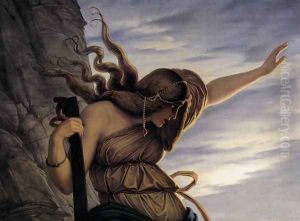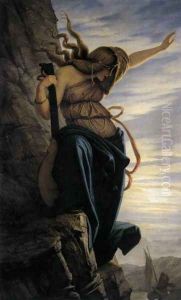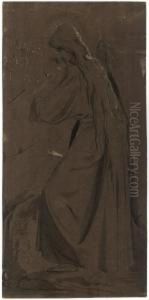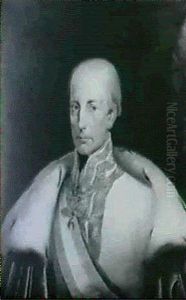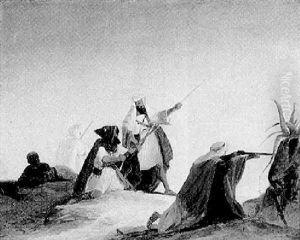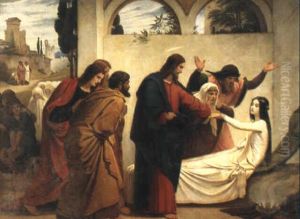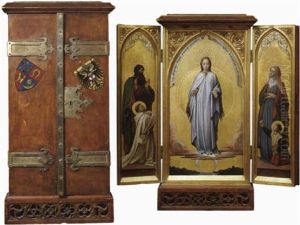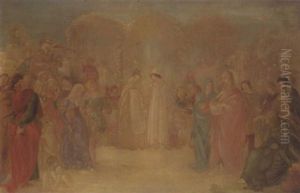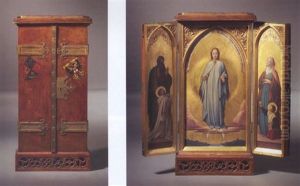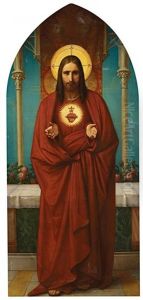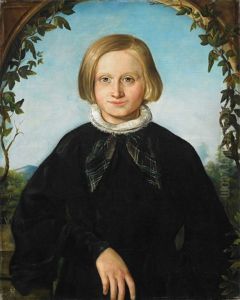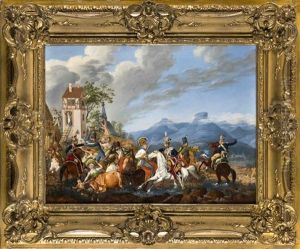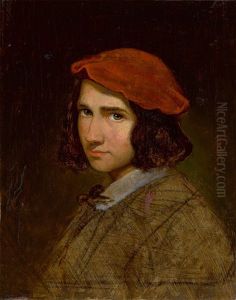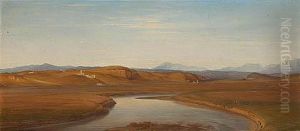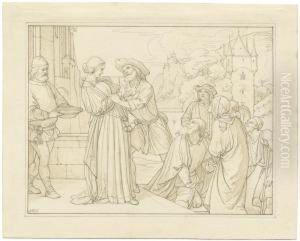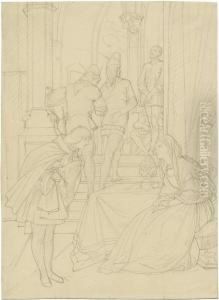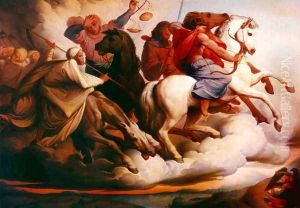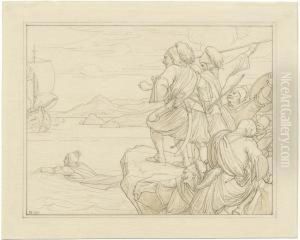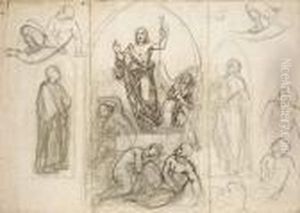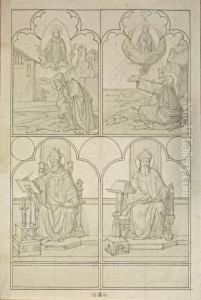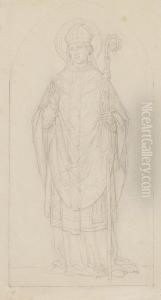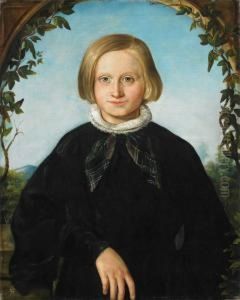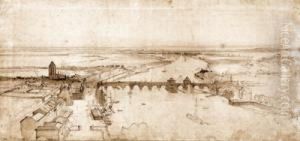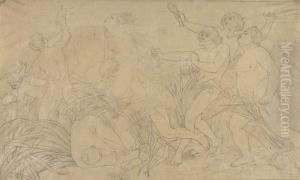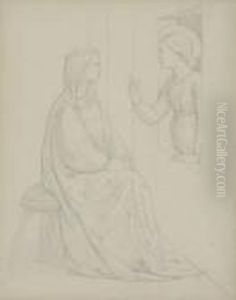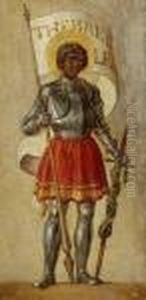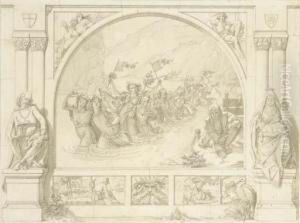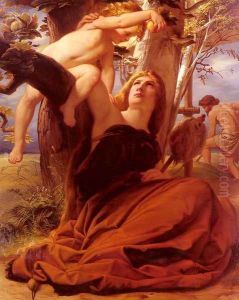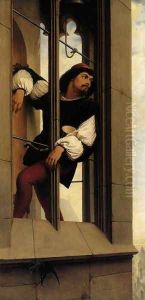Edward Jakob Von Steinle Paintings
Eduard Jakob von Steinle was an influential German painter and member of the Nazarene movement. Born on July 2, 1810, in Vienna, Austria, Steinle's artistic talents were evident from a young age. He was a student of the painter Friedrich Overbeck, who was a prominent figure in the Nazarene movement, a group of early 19th-century Romantic painters who aimed to revive honesty and spirituality in Christian art.
Steinle's work is characterized by its vivid color, attention to detail, and often religious or spiritual themes. He was deeply inspired by medieval art, as were his Nazarene contemporaries, and sought to bring about a rebirth of traditional religious art forms. Steinle was not just a painter but also a skilled draughtsman and illustrator, contributing to various publications and projects with his drawings.
In 1834, Steinle moved to Frankfurt am Main, where he became a central figure in the city's artistic life. He took a position as a professor at the Städelschule, Frankfurt's academy of fine arts, where he influenced a generation of artists. His contributions to the arts were not limited to painting and teaching; Steinle also worked on frescoes, glass paintings, and mosaics, many of which can be found in churches and public buildings across Germany.
Throughout his career, Steinle maintained a focus on religious art, but he also explored other themes, including mythology, history, and folklore. His style evolved over time, incorporating elements of Romanticism and later, to some degree, the emerging Realist movement. Despite changes in artistic trends, Steinle remained committed to his vision of spiritually resonant art.
Eduard Jakob von Steinle passed away on September 19, 1886, in Frankfurt am Main. His legacy is one of devotion to the spiritual potential of art, and his works continue to be appreciated for their beauty and depth of feeling.
